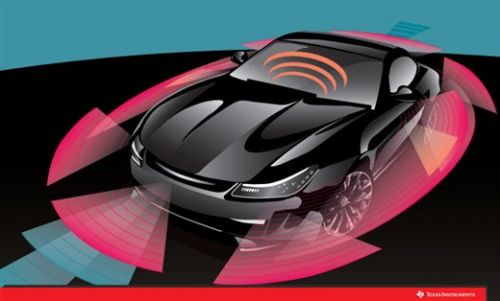The world is changing rapidly, whether it is roads, buildings or the cities we live in. This high-speed change can be seen.
The new high-precision single-chip millimeter-wave (mmWave) sensor is adapting to the world's rapid development, supporting a wide range of applications from automotive radar to industrial automation. These sophisticated sensors give designers a new platform to help vehicles, buildings, factories and drones achieve greater intelligence, safety and autonomy. Technological advances such as millimeter-wave sensors are like a timely rain. The reason for this is based on the following reasons:
By 2020, the number of self-driving cars on the road will reach 10 million.
56% of industrial companies will achieve efficiency upgrades in the next five years.
By 2020, 81% of homes and buildings will be automated.

These changes will place higher demands on accurate sensing capabilities, requiring not only the range, speed and angle of the object to be detected, but also plastic, drywall, glass, etc., as well as rain, fog, dust, light and darkness. Perform precise sensing in a variety of extreme and challenging environments.
So far, sensing systems have used discrete components to transmit, receive, and analyze signals. Using discrete components on a board increases the size, power, and overall cost of the system. Texas Instruments' technology based on Complementary Metal Oxide Semiconductor (CMOS) platforms integrates industry-leading digital signal processors (DSPs) and microcontrollers (MCUs) into a single, small package while reducing power consumption Can provide a solution that is three times more accurate than current solutions.
Automotive application

Sensors in automotive applications will support the Advanced Driver Assistance System (ADAS), which can warn, brake, and monitor the vehicle whether it is on the way to the grocery store, on the way to work, or on long-distance road trips. And guidance. These systems, which are increasingly demanding, are the first step towards fully automated driving.
Technologies currently widely used in automobiles include adaptive cruise control, automatic emergency braking, blind spot warning, lane departure warning, and even parking assistance. In the future, advanced technologies such as automatic parking, highly automated driving and, ultimately, fully automated driving will depend on increasingly sophisticated intelligent sensing of radar, laser, ultrasonic, infrared and laser radar technologies.
Industrial application
Millimeter wave sensors bring greater efficiency and intelligence to buildings and factories.
There are numerous applications for industrial systems. For example, the ultra-high precision provided by the sensor will enable the company to accurately measure the level of liquid in the container as a means of managing inventory and preventive detection of leaks; peripheral sensors provide accurate motion-sensing monitoring of safety systems and Tracking; traffic monitoring systems that use millimeter-wave sensors will be able to create smarter cities by reducing traffic pressure.
The sensor will also provide higher precision for robots and forklifts, and even the number of people in a room.
Our world is in the midst of the next industrial revolution, which will require unprecedented precision to provide support. Technologies such as mmWave will enable designers to meet the needs of the world in different ways of innovation in the past, laying a solid foundation for the next great industrial revolution.
Basic Features
1. The terminal has universal mounting feet so that it can be installed on U-rail NC 35 and G-rail NC32.
2. The closed screw guide hole ensures ideal screwdriver operation.
3. Equipped with uniform accessories for terminals of multiple cross-section grades, such as end plates, grouping partitions, etc.
4. Potential distribution can be achieved by inserting a fixed bridge in the center of the terminal or an edge-plug bridge inserted into the wire cavity.
5. The grounding terminal and the N-line slider breaking terminal with the same shape as the common terminal.
6. Using the identification system ZT, unified terminal identification can be realized.
7. The rich graphics enhance the three-dimensional sense of the wiring system.
Din Rail Terminal Block,Din Rail Fuse Terminal Block,Din Rail Busbar Terminal Block,Din Rail Power Terminal Blocks
Sichuan Xinlian electronic science and technology Company , https://www.sztmlch.com
